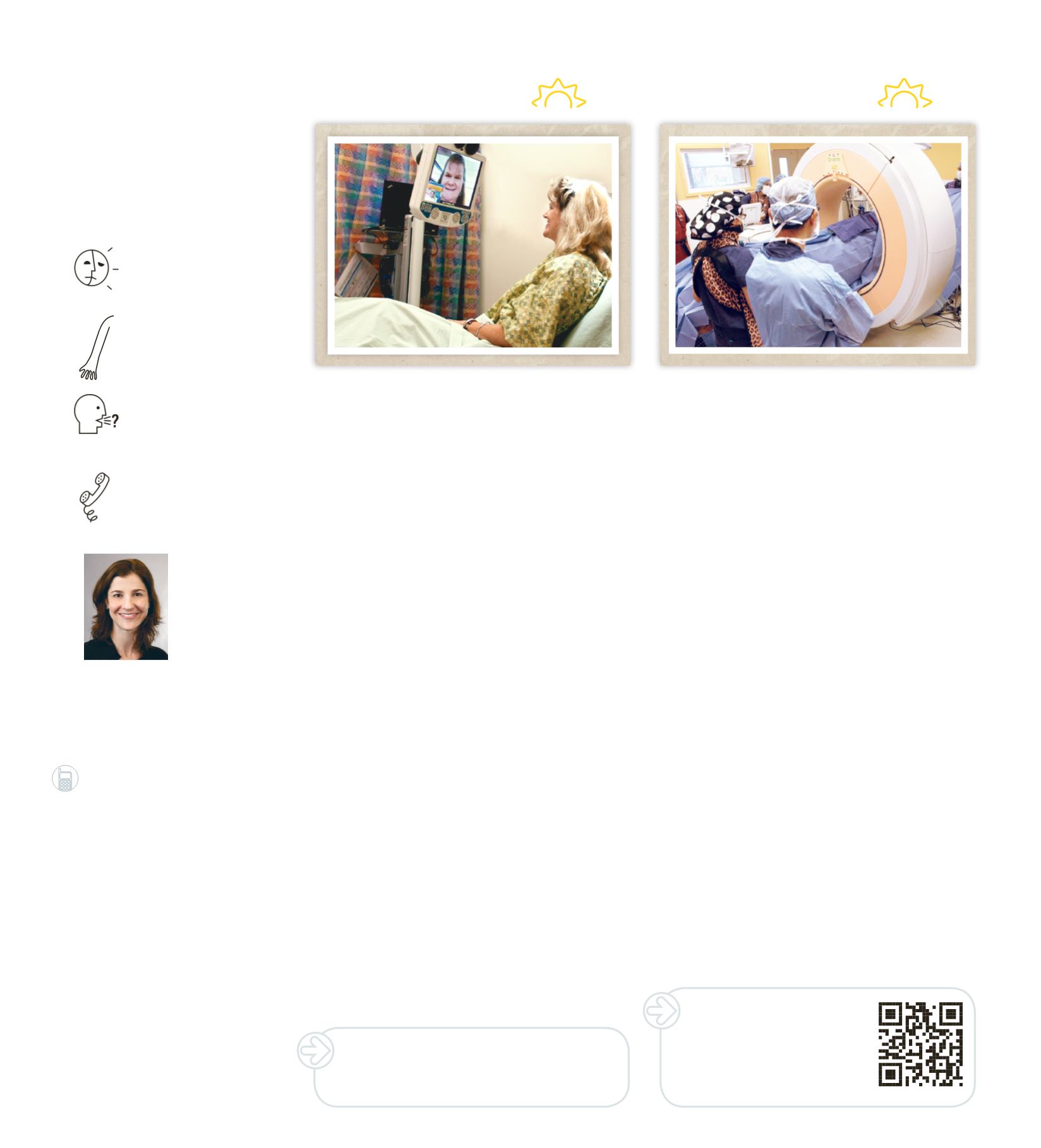
Sarice Bassin, MD
Neurology
PeaceHealth Medical Group
Neurology
505 NE 87th Ave., Suite 460
Vancouver, WA 98664
360-514-7771
Connecting specialists
and patients
I T ’ S AMAZ I NG WHAT
technology can do. We share photos
instantaneously and enjoy face-to-face time with relatives
thousands of miles away. In a similar way, technology is now
helping us deliver emergency services faster than ever.
Telemedicine uses robotic videoconferencing to bring
medical care to patients, regardless of their physical location.
At PeaceHealth Southwest Medical Center, a robot on
wheels, funded by the PeaceHealth Southwest Foundation,
is being used in the emergency department to link stroke
patients with on-call specialists. Through the video link, the
neurologist can quickly speak with and examine the patient
to determine the appropriate treatment.
“Time lost is brain lost,” says Sarice Bassin, MD,
Medical Director of the Comprehensive Stroke Center at
PeaceHealth Southwest. “The faster we can evaluate and treat
a patient having a stroke, the better the outcomes will be.”
The telemedicine robot can be used for medical
consultations in numerous fields, including psychiatry,
dermatology, and cardiology. PeaceHealth St. John has
just installed a telemedicine robot, nicknamed “Sandy,” to
assist with high-risk newborns. PeaceHealth staff uses the
telemedicine link to get immediate help from the neonatal
intensive care specialists at Oregon Health & Science
University–Doernbecher.
“It’s nice to have these experts in the roomwith us,
guiding us through these difficult cases,” says Tori Bernier,
Nurse Manager of the Birth Center at PeaceHealth St. John.
“It’s great if families can remain in our community for care,
and this helps make that more possible.”
Health
topics
P EACEHEA LTH SOUTHWE S T MED I CA L CENT E R
is excited to announce the debut of the Medtronic
O-arm® Surgical Imaging System, a high-tech piece of
equipment that greatly enhances surgical care for our
patients.
The O-arm is a multi-dimensional surgical imaging
platform that is optimized for use in spine, orthopedic,
and trauma-related surgeries. In the photo above,
you can see it in action on its official first case
with neurosurgeon Wael Musleh, MD, Rebound
Neurosurgery, who is preparing to perform spinal
surgery on a patient.
The O-arm gets its name from its design—making a
complete circle or O around the patient. This tool takes
between 250–300 images in about 13 seconds, and
reconstructs the images in 3-D, like a CT scanner. This
gives the physician fast access to real-time, multi-plane
images during delicate procedures, such as spinal surgery.
Because it’s so quick, it also minimizes the exposure to
radiation for both the patients and our caregivers.
Right now, PeaceHealth Southwest Medical Center
is the first hospital in the area to use the O-arm in
surgery. The closest hospitals to offer this technology
are in Seattle, Wash., and Medford, Ore. PeaceHealth
Southwest Medical Center’s investment of $950,000 in
the O-arm was made possible through private donations
to the PeaceHealth Southwest Foundation.
Act FAST
When it comes to stroke,
time lost is brain lost. Act
FAST and call 911 at the
warning signs of a stroke.
F
ace: Ask the
person to smile.
Does one side droop?
A
rms: Ask the
person to raise both
arms. Does one
arm drift downward?
S
peech: Ask the
person to repeat
a simple phrase. Is
their speech slurred?
T
ime: If you observe
any of these signs,
call 911 immediately.
DONOR SUP POR T ED
DONOR SUP POR T ED
Introducing a
high-tech imaging tool
2
SOUTHWEST
health
To see a video of one way
telemedicine is helping patients, visit
.
Scan this QR code or visit
for more about the O-arm.


